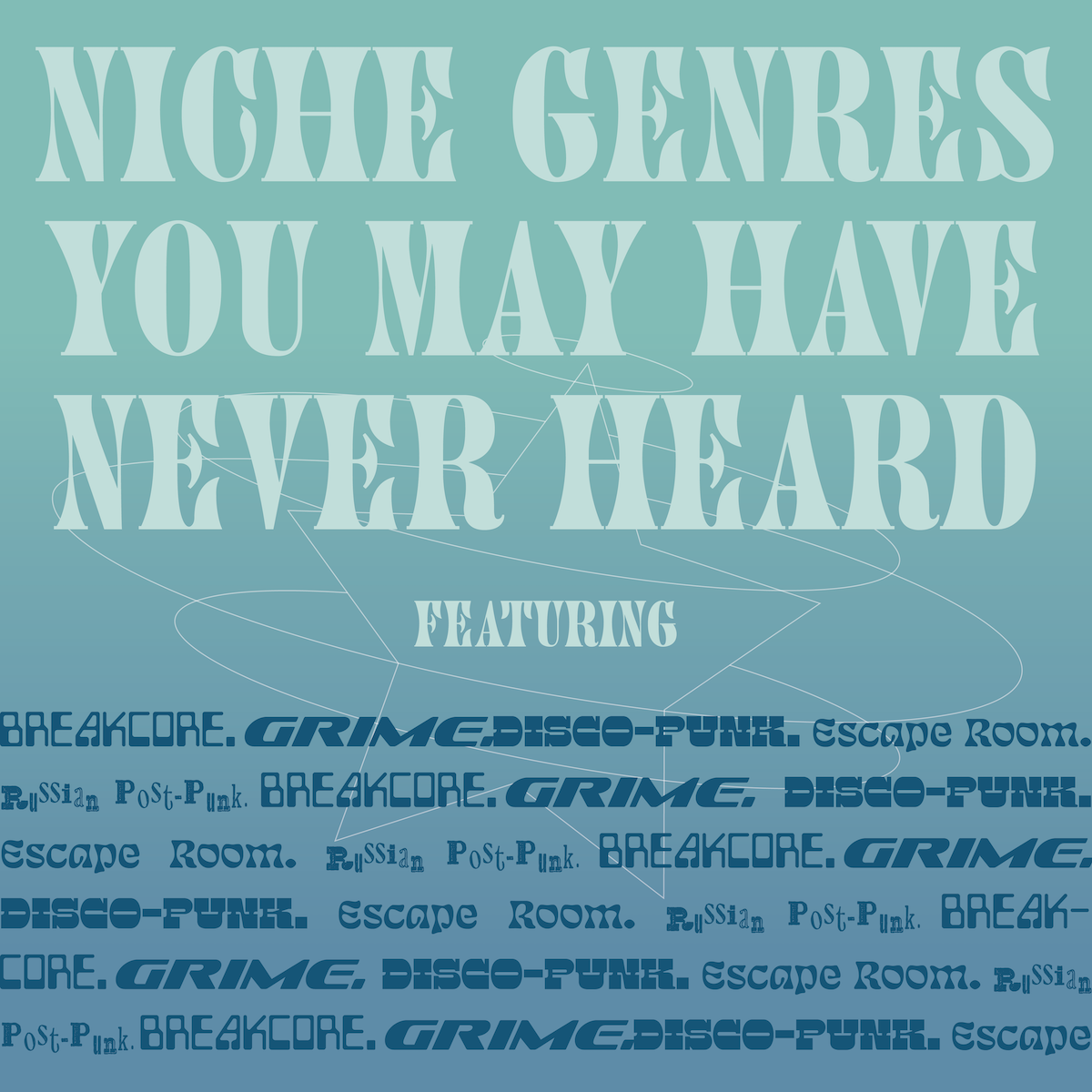
Music has existed for a long time and, as a result, has evolved into numerous unique subgenres. While some subgenres arose by combining previous genres, many emerged out of the particular culture in their region of origin. Here are five interesting genres to explore if you are looking for something new.
- Breakcore
Loud, fast, chaotic and disorienting — Breakcore is a conglomeration of many other subgenres, including hardcore punk and jungle. Breakcore originated in the 1990s with artists like Venetian Snares and Bong-Ra, who helped define the genre. A fully electronic one, breakcore is a genre characterized by fast BPM and rapidly switching melodies, resulting in an unpredictable sound. The genre is wildly experimental and no two breakcore songs sound the same. However, one similarity among all breakcore songs is the choppy drum beats — a sound dubbed “breakbeat.” Songs within this genre typically lack vocals, though many include sampled vocals from other songs. Listen to some absurdly-named titles (which is another feature of breakcore) like “666MPH” by Bong-Ra and “Flat Earth” by Clown Core.
- Grime
Grime has unique origins, first emerging from UK hip-hop then finding its place in the club and dance music scene. The genre originated in the London underground music scene in the early 2000’s, popularized by a group called Roll Deep, fronted by a Black artist named Wiley. This genre of music has fairly strict limitations that differentiate it from hip-hop: it tends to have a fast BPM, breakbeats and a deep bassline. Grime is deeply tied to the time and region that it came from, given the audible British accents often singing the songs. If you want to get a taste of what grime sounds like, check out “Bullet from a Gun” by Skepta — a former member of Roll Deep — and a more modern grime song, “Vex” by Slowthai.
- Escape Room
Due to a difficult-to-define range of sounds, “escape room” was actually a term coined by Spotify. A boundless genre with no strict limitations, escape room is a breeding ground for experimental pop, hip-hop and more. When listening to escape room, it is clear that most songs share some indefinable quality, but it is difficult to come up with a tangible description of this genre. Escape room includes a diverse group of modern artists that you might not expect to fall under the same genre, including Anderson Paak, Kaytranda, Poppy, Grimes, Ecco2k and even Death Grips. Escape room artists are skilled in creating a sort of ethereal ambiance, many using a combination of pop beats mixed with heavy metal guitars to achieve this. Feel out the vibes of escape room with “BLOODMONEY” by Poppy and “Slime” by Shygirl.
- Russian Post-Punk or Soviet Post-Punk
Post-punk is a broad, all-encompassing description of contemporary punk music, separated into subgenres based on their deviation from the classic punk sound. The unique features in Russian post-punk that distinguish it from other subgenres of post-punk draw from the Russian culture and history at the time of its creation. A dark and dreary sound emerges from the use of a minor key and deep, gothic basslines. Russian post-punk today is led by bands like Molchat Doma (though they are from Belarus, not Russia) and Motorama. Listen to their songs “Судно (Борис Рижий)” and “Red Drop,” respectively.
- Dance-Punk, Disco-Punk or Techno-Punk
A subgenre of post-punk, dance-punk draws inspiration from both classic punk and new wave. Dance-punk can be traced back to the early 1980s, when artists like James White and The Blacks and ESG began to expand upon the simple chords and aggression from classic punk with funky bass lines and techno beats. Because of its upbeat, danceable melodies, dance-punk is the more accessible cousin of other post-punk genres like synth-punk, crust-punk, noise-punk, steampunk, etc. Think of LCD Soundsystem, Le Tigre or Franz Ferdinand — all artists who spearhead the genre. Dance along to “UFO” by ESG or “Losing My Edge” by LCD Soundsystem.
Every Noise at Once is a tool by Spotify that was utilized to search for genres for this article.

